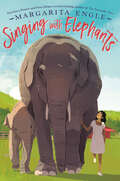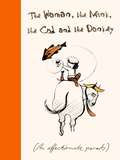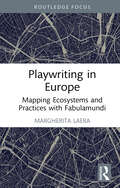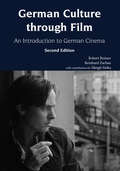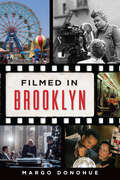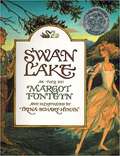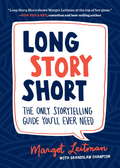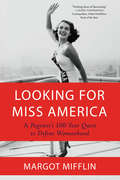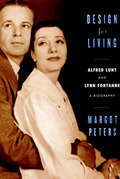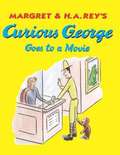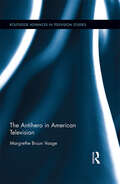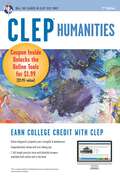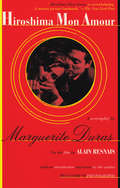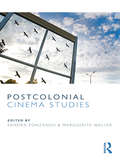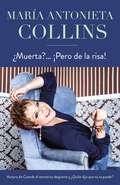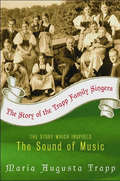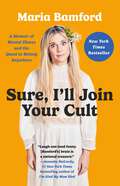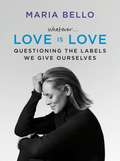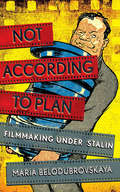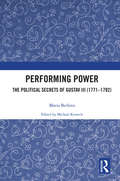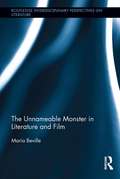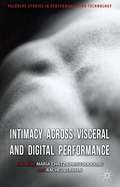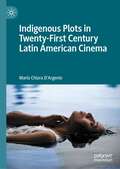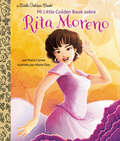- Table View
- List View
Singing with Elephants
by Margarita EngleA powerful novel in verse from Newbery and Pura Belpré Award-winning author Margarita Engle about the friendship between a young girl and the poet Gabriela Mistral that leads to healing and hope for both of them.Cuban-born eleven-year-old Oriol lives in Santa Barbara, California, where she struggles to belong. But most of the time that's okay, because she enjoys helping her parents care for the many injured animals at their veterinary clinic. Then Gabriela Mistral, the first Latin American winner of a Nobel Prize in Literature, moves to town, and aspiring writer Oriol finds herself opening up. As she begins to create a world of words for herself, Oriol learns it will take courage to stay true to herself and do what she thinks is right--attempting to rescue a baby elephant in need--even if it means keeping secrets from those she loves. A beautifully written, lyrically told story about the power of friendship-- between generations, between humans and animals--and the potential of poetry to inspire action and acceptance. * "Replete with lovely, nearly magical imagery...Brilliant, joyful, and deeply moving." -Kirkus, starred review * "Employing immersive free verse that conveys themes of compassion, friendship, justice, and vulnerability, Engle captures how inexplicable Oriol&’s grief feels, encasing it in a powerful, charitable, and brave young voice." -Publishers Weekly, starred review * "A novel written in verse that sings in your heart." -Pura Belpré Award-winning author Marjorie Agosín
The Woman, the Mink, the Cod and the Donkey: An affectionate parody
by Margerie SwashShe was looking for wine. Instead she found friendship. (Okay, it was with three animals, but she really hadn't drunk any wine at that point, promise.) --- Come, dearest reader, and dive into this book. It's warm and safe in here, which you will have guessed already because it's about a human and three animals. You might not be able to remember the animals or the order they fall within the title, but that doesn't matter. The pictures will remind you that the story is about a woman, a mink, a salmon and a donkey. COD, not salmon, sorry - it's a cod.The woman is embarking on an important journey. She does not know her destination, but she knows what she'll find when she gets there: an open pub. It has been a long time since she has been in one due to a strange, sad region of yester-year called 'Lockdown'. On her travels she bumps into the mink, the cod and a donkey who inexplicably resembles Donald Trump, and together they discuss their most valued life lessons, such as the value of travel insurance, and why it's always important to wear breathable pants.
Playwriting in Europe: Mapping Ecosystems and Practices with Fabulamundi (Routledge Advances in Theatre & Performance Studies)
by Margherita LaeraThis book maps contemporary playwriting and theatre translation practices and ecologies in the European continent. Whether you are a scholar researching contemporary drama and translation, or a theatre practitioner looking for ways to navigate theatrical conventions in other countries, this book is for you. Through questionnaires and one-to-one interviews with key stakeholders, Dr Laera collects qualitative and quantitative data about how each national theatre culture supports living dramatists, what conventions drive the production and translation (or lack thereof) of contemporary plays, and what perceptions are held by gatekeepers, theatre-makers and other cultural operators about the theatre system in which they work. Through country-by-country descriptions and analyses; interviews with playwrights, translators, directors and gatekeepers; a list of key facts and best practices; and a rigorous assessment of its methodologies, this volume is indispensable for those interested in contemporary European theatre practice.
German Culture through Film: An Introduction to German Cinema
by Robert C. Reimer Reinhard Zachau Margit M. SinkaGerman Culture through Film: An Introduction to German Cinema is an English-language text that serves equally well in courses on modern German film, in courses on general film studies, in courses that incorporate film as a way to study culture, and as an engaging resource for scholars, students, and devotees of cinema and film history. In its second edition, German Culture through Film expands on the first edition, providing additional chapters with context for understanding the era in which the featured films were produced. Thirty-three notable German films are arranged in seven chronological chapters, spanning key moments in German film history, from the silent era to the present. Each chapter begins with an introduction that focuses on the history and culture surrounding films of the relevant period. Sections within chapters are each devoted to one particular film, providing film credits, a summary of the story, background information, an evaluation, questions and activities to encourage diverse interpretations, a list of related films, and bibliographical information on the films discussed.
Filmed in Brooklyn
by Margo Donohue"Shooting in Brooklyn is like opening a time capsule. Nothing has changed. Everything looks like it did in the eighties." -Freddie Prinze, Jr. Discover the iconic films, legendary personalities and the locations for timeless big screen moments that took place in Brooklyn. From Saturday Night Fever to numerous Spike Lee Joints, readers can learn about Brooklyn's cinematic past or discover locations to visit today.
Swan Lake
by Margot Fonteyn Trina HymanA prince's love for a swan queen overcomes an evil sorcerer's spell in this fairy tale adaptation of the classic ballet.
Long Story Short: The Only Storytelling Guide You'll Ever Need
by Margot LeitmanThis is a practical storytelling guide from comedian, winner of multiple Moth storytelling competitions, and founder of the Upright Citizens Brigade storytelling program, Margot Leitman. Did you ever wish you could tell a story that leaves others spellbound? Storytelling teacher and champion Margot Leitman will show you how! With a fun, irreverent, and infographic approach, this guide breaks a story into concrete components with ways to improve content, structure, emotional impact, and delivery through personal anecdotes, relatable examples, and practical exercises.From the Trade Paperback edition.
Looking for Miss America: A Pageant's 100-Year Quest to Define Womanhood
by Margot MifflinFrom an author praised for writing “delicious social history” (Dwight Garner, The New York Times) comes a lively account of memorable Miss America contestants, protests, and scandals—and how the pageant, nearing its one hundredth anniversary, serves as an unintended indicator of feminist progressLooking for Miss America is a fast–paced narrative history of a curious and contradictory institution. From its start in 1921 as an Atlantic City tourist draw to its current incarnation as a scholarship competition, the pageant has indexed women’s status during periods of social change—the post–suffrage 1920s, the Eisenhower 1950s, the #MeToo era. This ever–changing institution has been shaped by war, evangelism, the rise of television and reality TV, and, significantly, by contestants who confounded expectations.Spotlighting individuals, from Yolande Betbeze, whose refusal to pose in swimsuits led an angry sponsor to launch the rival Miss USA contest, to the first black winner, Vanessa Williams, who received death threats and was protected by sharpshooters in her hometown parade, Margot Mifflin shows how women made hard bargains even as they used the pageant for economic advancement. The pageant’s history includes, crucially, those it excluded; the notorious Rule Seven, which required contestants to be “of the white race,” was retired in the 1950s, but no women of color were crowned until the 1980s.In rigorously researched, vibrant chapters that unpack each decade of the pageant, Looking for Miss America examines the heady blend of capitalism, patriotism, class anxiety, and cultural mythology that has fueled this American ritual.
Design for Living: Alfred Lunt and Lynn Fontanne
by Margot PetersFrom the much-admired biographer of Charlotte Brontë, Mrs. Patrick Campbell, and the Barrymores ("Margot Peters is surely now . . . our foremost historian of stage make-believe"--Leon Edel), a new biography of the most famous English-speaking acting team of the twentieth century. Individually, they were recognized as extraordinary actors, each one a star celebrated, imitated, sought after. Together, they were legend. The Lunts. A name to conjure with. Alfred Lunt and Lynn Fontanne worked together so imaginatively, so seamlessly onstage that they seemed to fuse into one person. Offstage, they brawled so famously and raucously over every detail of every performance that they inspired the musical Kiss Me, Kate. At home on Broadway, in London's West End, touring the United States and Great Britain, and even playing "the foxhole circuit" of World War II, the Lunts stunned, moved, and mystified audiences for more than four decades. They were considered to be a rarefied taste, but when they toured Texas in the 1930s, the audience threw cowboy hats onto the stage. Their private life was equally fascinating, as unusual as the one they led in public. Friends like the critic Alexander Woollcott (whom Edna Ferber once described as "the little New Jersey Nero who thinks his pinafore is a toga"), Noël Coward, Laurette Taylor, and Sidney Greenstreet received lifelong loyalty and hospitality. Ten Chimneys, their country home in Genesee Depot, Wisconsin, "is to performers what the Vatican is to Catholics," Carol Channing once said. "The Lunts are where we all spring from. " In this new biography, Margot Peters catches the magic of Lunt and Fontanne--their period, their work, their intimacy and its contradictions--with candor, delicacy, intelligence, and wit. She writes about their personal and creative choices as deftly as she captures their world, from their meeting (backstage, naturally)--when Fontanne was a young actress in the first flush of stardom and Lunt a lanky midwesterner who came in the stage door, bowed to her elaborately, lost his balance, and fell down the stairs--and the early days when an unknown and very hungry Noël Coward lived in a swank hotel in a room the size of a closet and cadged meals at their table to the telegram the famous couple once sent to a movie mogul, turning down a studio contract worth a fortune ("We can be bought, my dear Mr. Laemmle, but we can't be bored"). We follow the Lunts through triumphs in plays such as The Guardsman, The Taming of the Shrew, and Design for Living; through friendships and feuds; through the intricate way they worked with such playwrights and directors as S. N. Behrman, Robert Sherwood, Giraudoux, Dürrenmatt, Peter Brook, and with each other. Margot Peters captures the gallantry of two remarkably gifted people who lived for their art and for each other. Alfred Lunt and Lynn Fontanne were once described as an "amazing duet of intelligence and gaiety. " Margot Peters re-creates the fun and the fireworks. From the Hardcover edition.
Curious George Goes to a Movie
by Margret ReyWhen his curiosity leads him to investigate how the movie gets onto the screen, George, an inquisitive monkey, disrupts the show. Share Curious George's irresistible qualities-ingenuity, opportunity, determination, and curiosity in learning and exploring-with these easy-to-read picture books for your young readers.
The Antihero in American Television (Routledge Advances in Television Studies)
by Margrethe Bruun VaageThe antihero prevails in recent American drama television series. Characters such as mobster kingpin Tony Soprano (The Sopranos), meth cook and gangster-in-the-making Walter White (Breaking Bad) and serial killer Dexter Morgan (Dexter) are not morally good, so how do these television series make us engage in these morally bad main characters? And what does this tell us about our moral psychological make-up, and more specifically, about the moral psychology of fiction? Vaage argues that the fictional status of these series deactivates rational, deliberate moral evaluation, making the spectator rely on moral emotions and intuitions that are relatively easy to manipulate with narrative strategies. Nevertheless, she also argues that these series regularly encourage reactivation of deliberate, moral evaluation. In so doing, these fictional series can teach us something about ourselves as moral beings—what our moral intuitions and emotions are, and how these might differ from deliberate, moral evaluation.
CLEP® Humanities Book + Online (CLEP Test Preparation)
by Robert Liftig Marguerite BarrettEarn College Credit with REA’s Test Prep for CLEP Humanities Everything you need to pass the exam and get the college credit you deserve. REA leads the way in helping students pass their College Board CLEP exams and earn college credit while reducing their tuition costs. With 25+ years of experience in test prep for the College-Level Examination Program (CLEP), REA is your trusted source for the most up-to-date test-aligned content. Whether you’re an adult returning to finish your degree, a traditional-age college student, a military service member, or a high school or home-schooled student looking to get a head start on college and shorten your path to graduation, CLEP is perfect for you. REA’s expert authors know the CLEP tests inside out. And thanks to our partners at Proctortrack (proctortrack.com/clep), you can now take your exam at your convenience, from the comfort of home. Prep for success on the CLEP Humanities exam with REA’s personalized three-step plan: (1) focus your study, (2) review with the book, and (3) measure your test-readiness. Our Book + Online prep gives you all the tools you need to make the most of your study time: Diagnostic exam: Pinpoint what you already know and what you need to study.Targeted subject review: Learn what you’ll be tested on.Two full-length practice exams: Zero in on the topics that give you trouble now so you’ll be confident and prepared on test day.Glossary of key terms: Round out your prep with must-know vocabulary.REA is America’s recognized leader in CLEP preparation. Our test prep helps you earn valuable college credit, save on tuition, and accelerate your path to a college degree.
Hiroshima Mon Amour: A Screenplay (Facile A Lire Ser. #No. 9)
by Marguerite DurasOne of the most influential works in the history of cinema, Alain Renais's Hiroshima Mon Amour gathered international acclaim upon its release in 1959 and was awarded the International Critics' Prize at the Cannes Film festival and the New York Film Critics' Award. Ostensibly the story of a love affair between a Japanese architect and a French actress visiting Japan to make a film on peace, Hiroshima Mon Amour is a stunning exploration of the influence of war on both Japanese and French culture and the conflict between love and inhumanity.
At the Piano with Fauré
by Marguerite LongThe virtuoso pianist and teacher, Marguerite Long, was a great friend of Fauré and the foremost interpreter of his music.
Postcolonial Cinema Studies
by Sandra Ponzanesi Marguerite WallerThis collection of essays foregrounds the work of filmmakers in theorizing and comparing postcolonial conditions, recasting debates in both cinema and postcolonial studies. Postcolonial cinema is presented, not as a rigid category, but as an optic through which to address questions of postcolonial historiography, geography, subjectivity, and epistemology. Current circumstances of migration and immigration, militarization, economic exploitation, racial and religious conflict, enactments of citizenship, and cultural self-representation have deep roots in colonial/postcolonial/neocolonial histories. Contributors deeply engage the tense asymmetries bequeathed to the contemporary world by the multiple,diverse, and overlapping histories of European, Soviet, U.S., and multi-national imperial ventures. With interdisciplinary expertise, they discover and explore the conceptual temporalities and spatialities of postcoloniality, with an emphasis on the politics of form, the ‘postcolonial aesthetics’ through which filmmakers challenge themselves and their viewers to move beyond national and imperial imaginaries. Contributors include: Jude G. Akudinobi, Kanika Batra, Ruth Ben-Ghiat, Shohini Chaudhuri, Julie F. Codell, Sabine Doran, Hamish Ford, Claudia Hoffmann, Anikó Imre, Priya Jaikumar, Mariam B. Lam, Paulo de Medeiros, Sandra Ponzanesi, Richard Rice, Mireille Rosello and Marguerite Waller.
¿Muerta?... ¡Pero de la risa!
by Maria Antonieta CollinsCon el candor de siempre y la honestidad y el humor que la definen, María Antonieta Collins relata cómo su carrera periodística se esfumó de repente pero regresó mejor que nunca. Escribe sobre el camino espiritual que la ayudo a superar una época oscura y como su fe la ayudó recuperar y mejorar su vida. Tanto los éxitos como los obstáculos en la vida tienen varias facetas - María Antonieta delinea paso a paso lo que debes hacer para maniobrar los retos tanto de tu vida personal como profesional, y vas descubriendo que los dos giran uno alrededor del otro.
The Story of the Trapp Family Singers
by Maria Augusta TrappWith nearly 1,500 Broadway performances, six Tony Awards, more than three million albums sold, and five Academy Awards, The Sound of Music, based on the lives of Maria, the baron, and their singing children, is as familiar to most of us as our own family history. But much about the real-life woman and her family was left untold.Here, Baroness Maria Augusta Trapp tells in her own beautiful, simple words the extraordinary story of her romance with the baron, their escape from Nazi-occupied Austria, and their life in America.Now with photographs from the original edition.
Sure, I'll Join Your Cult: A Memoir of Mental Illness and the Quest to Belong Anywhere
by Maria BamfordFrom &“weird, scary, ingenious&” (The New York Times) stand-up comedian Maria Bamford, an instant New York Times bestselling, brutally honest, and &“laugh-out-loud funny&” (Jennette McCurdy, #1 New York Times bestselling author) memoir about show business, mental health, and the comfort of rigid belief systems—from Dale Carnegie&’s How to Win Friends and Influence People, to Richard Simmons, to 12-step programs.Maria Bamford is a comedian&’s comedian (an outsider among outsiders) and has forever fought to find a place to belong. From struggling with an eating disorder as a child of the 1980s, to navigating a career in the arts (and medical debt and psychiatric institutionalization), she has tried just about every method possible to not only be a part of the world, but to want to be a part of it. In Bamford&’s &“trademark blend of disarming intimacy and dark whimsy&” (Publishers Weekly), Sure, I&’ll Join Your Cultbrings us on a quest to participate in something. With sincerity and transparency, she recounts every anonymous fellowship she has joined (including but not limited to: Debtors Anonymous, Sex and Love Addicts Anonymous, and Overeaters Anonymous), every hypomanic episode (from worrying about selling out under capitalism to enforcing union rules on her Netflix TV show set to protect her health), and every easy 1-to-3-step recipe for fudge in between. Packed with &“Bamford&’s brilliance, relentless humor, and insatiable instinct for survival (Library Journal), this memoir explores what it means to keep going, and to be a member of society (or any group she&’s invited to) despite not being very good at it. In turn, she hopes to transform isolating experiences into comedy that will make you feel less alone (without turning into a cult following).
Whatever . . . Love Is Love: Questioning the Labels We Give Ourselves
by Maria BelloThe acclaimed actress questions the labels we wear when it comes to partnership, career, love, and sexuality in this deeply moving memoir.Written as a series of provocative questions and thoughtful answers, Whatever . . . Love Is Love is filled with deeply personal, often funny, and even passionate stories, stories in which Maria bares her soul and shares what she’s learned—not only about romantic love, but also about her relationship with her parents, her feelings about spirituality, her sexual identity, the highs and lows of her career, her humanitarian work, and her worth as a mother.Using her experiences as a gateway to a larger conversation, Maria encourages you to think about the life you lead, who you love, what you do, what you believe in, and what you call yourself . . . and helps you to realize that the only labels that matter are the ones we place on and accept for ourselves, even if they don’t fit the mold of “typical.”“Whatever . . . Love Is Love isn’t your typical celebrity memoir. . . . Instead, each chapter, through charming candor and humor, challenges a series of ‘labels’ that represent impossible standards to which we hold ourselves.” —Marie Claire“Never preachy, in this book [Bello] diligently and methodically deconstructs where her values have come from. . . . Personal, provocative, and inspiring.” —Patricia Arquette, Oscar®-nominated actor
Not According to Plan: Filmmaking under Stalin
by Maria BelodubrovskayaIn Not According to Plan, Maria Belodubrovskaya reveals the limits on the power of even the most repressive totalitarian regimes to create and control propaganda. Belodubrovskaya's revisionist account of Soviet filmmaking between 1930 and 1953 highlights the extent to which the Soviet film industry remained stubbornly artisanal in its methods, especially in contrast to the more industrial approach of the Hollywood studio system. Not According to Plan shows that even though Josef Stalin recognized cinema as a "mighty instrument of mass agitation and propaganda" and strove to harness the Soviet film industry to serve the state, directors such as Eisenstein, Alexandrov, and Pudovkin had far more creative control than did party-appointed executives and censors.
Performing Power: The Political Secrets of Gustav III (1771-1792)
by Maria BerlovaPerforming Power explores 18th-century fabrication of the royal image by focusing on the example of King Gustav III (1746–1792) – one of Sweden’s most acclaimed and controversial monarchs – who conspicuously chose theater as the primary media for his image-making and role construction. The text postulates that Gustav III was motivated by theater’s ability to aid him in fulfilling Enlightenment’s tenet of broadly educating the populace and inculcating it with royal ideology. That he was an amateur actor, stage director, and playwright were other engines driving his choice. The project challenges and expands the commonly accepted perception of Gustav III’s contribution to Swedish theater, which has generally been limited to founding its National Opera, developing its national drama, and forming its national dramatic repertoire. Maria Berlova presents Gustav III as a performing King who strategically used political events as a framework through which he could embody the image of the ideal or enlightened monarch as presented by Voltaire. Through this, Performing Power explores the tight relationship and complex bond between theatrical arts and politics. This unique study will be of great interest to students and scholars in theater studies, 18th-century culture, and politics.
The Unnameable Monster in Literature and Film (Routledge Interdisciplinary Perspectives on Literature)
by Maria BevilleThis book visits the 'Thing' in its various manifestations as an unnameable monster in literature and film, reinforcing the idea that the very essence of the monster is its excess and its indeterminacy. Tied primarily to the artistic modes of the gothic, science fiction, and horror, the unnameable monster retains a persistent presence in literary forms as a reminder of the sublime object that exceeds our worst fears. Beville examines various representations of this elusive monster and argues that we must looks at the monster, rather than through it, at ourselves. As such, this book responds to the obsessive manner in which the monsters of literature and culture are ‘managed’ in processes of classification and in claims that they serve a social function by embodying all that is horrible in the human imagination. The book primarily considers literature from the Romantic period to the present, and film that leans toward postmodernism. Incorporating disciplines such as cultural theory, film theory, literary criticism, and continental philosophy, it focuses on that most difficult but interesting quality of the monster, its unnameability, in order to transform and accelerate current readings of not only the monsters of literature and film, but also those that are the focus of contemporary theoretical discussion.
Intimacy Across Visceral and Digital Performance
by Maria Chatzichristodoulou Rachel ZerihanConsisting of critical analyses, theoretical provocations and practical reflections by leading scholars/practitioners from the fields of performance studies, live art and creative technology, these essays examine the rise of intimate performance works and question the socio-historical contexts provoking those aesthetic and affective developments.
Indigenous Plots in Twenty-First Century Latin American Cinema
by Maria Chiara D'ArgenioIn this engaging book, Maria Chiara D’Argenio delineates a turn in recent Latin American filmmaking towards inter/cultural feature films made by non-Indigenous directors. Aimed at a global audience, but played by Indigenous actors, these films tell Indigenous stories in Indigenous languages. Over the last two decades, a growing number of Latin American films have screened the Indigenous experience by combining the local and the global in a way that has proved appealing at international film festivals. Locating the films in composite webs of past and present traditions and forms, Indigenous Plots in Twenty-First Century Latin American Cinema examines the critical reflection offered by recent inter/cultural films and the socio-cultural impact, if any, they might have had. Through the analysis of a selection of films produced between 2006 and 2019, the book gauges the extent to which non-Indigenous directors who set out to engage critically with colonial legacies and imaginaries, as well as with contemporary Indigenous marginalization, succeed in addressing these concerns by ‘unthinking’ and ‘undoing’ Western centrism and coloniality. Drawing on a wide range of disciplines and considering the entire cinematic process – from pre-production to the films’ production, circulation and critical reception – Indigenous Plots in Twenty-First Century Latin American Cinema makes the case for a holistic cultural criticism to explain the cultural and political work cinema does in specific historical contexts.
Mi Little Golden Book sobre Rita Moreno (Little Golden Book)
by Maria CorreaAyude a su pequeño a soñar en grande con una biografía Little Golden Book sobre la actriz, cantante y bailarina Rita Moreno, ganadora del EGOT. ¡Las biografías de Little Golden Book representan la introducción perfecta a los libros no-ficción para los niños en edad preescolar!Help your little one dream big with a Little Golden Book biography about EGOT-winning actor, singer, and dancer, Rita Moreno. Little Golden Book biographies are the perfect introduction to nonfiction for preschoolers!Este pequeño Little Golden Book sobre Rita Moreno, estrella puertorriqueña de West Side Story y primera latina en ganar un Oscar, es una historia inspiradora para niños pequeños, así como para sus padres y abuelos que la admiran.Otras biografías Little Golden Book en español:Mi Little Golden Book sobre Frida KahloMi Little Golden Book sobre Sonia SotomayorThis Little Golden Book about Rita Moreno—Puerto Rican-born star of West Side Story and the first Latina to win an Oscar—is an inspiring read-aloud for young children, as well as their parents and grandparents who are fans.Look for these other Spanish language Little Golden Book biographies:Mi Little Golden Book sobre Frida KahloMi Little Golden Book sobre Sonia SotomayorLook for more Little Golden Book biographies: • Betty White • Carol Burnett • Lucille Ball • Harry Belafonte • Julie Andrews • Dwayne Johnson
